
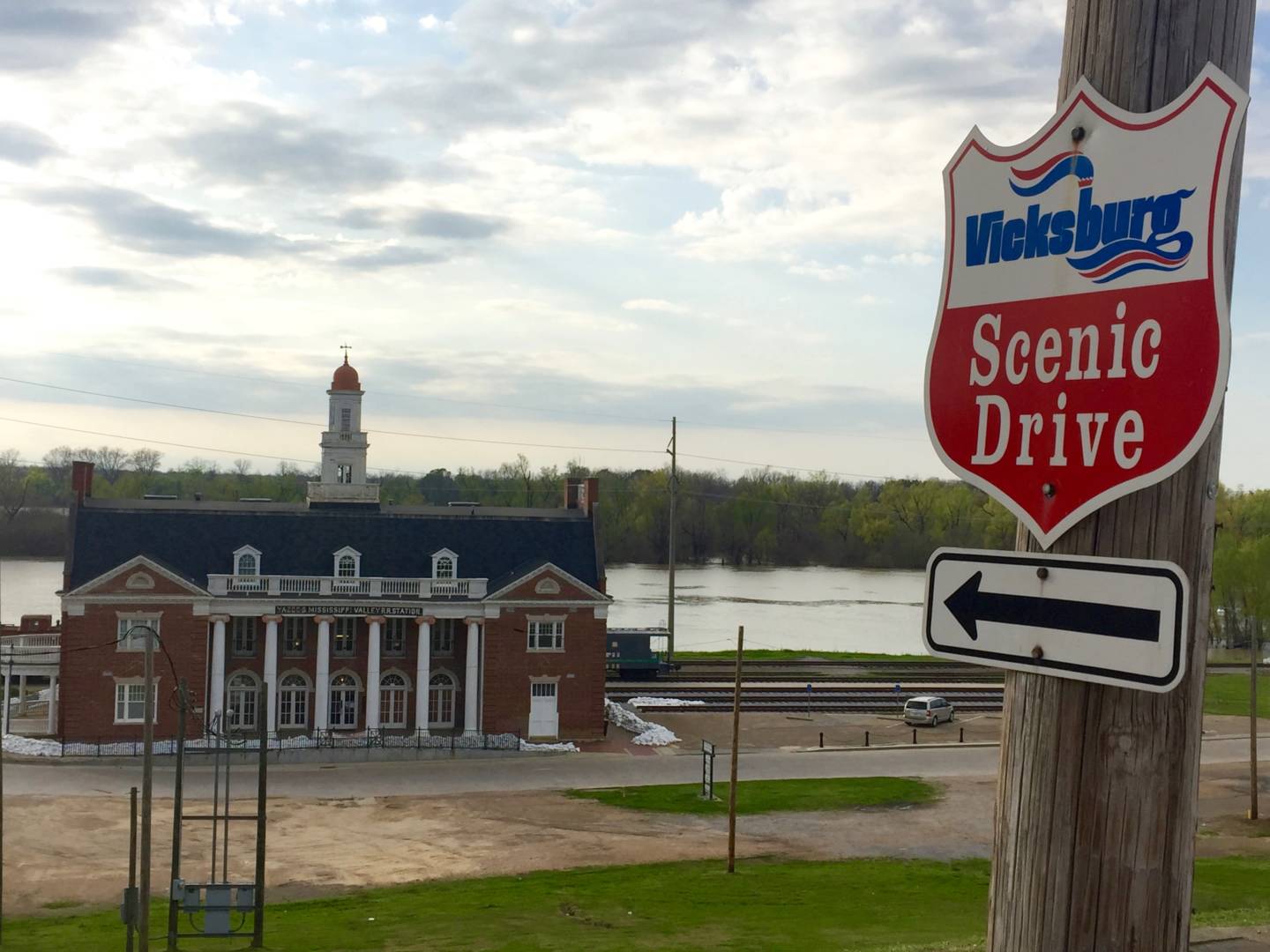
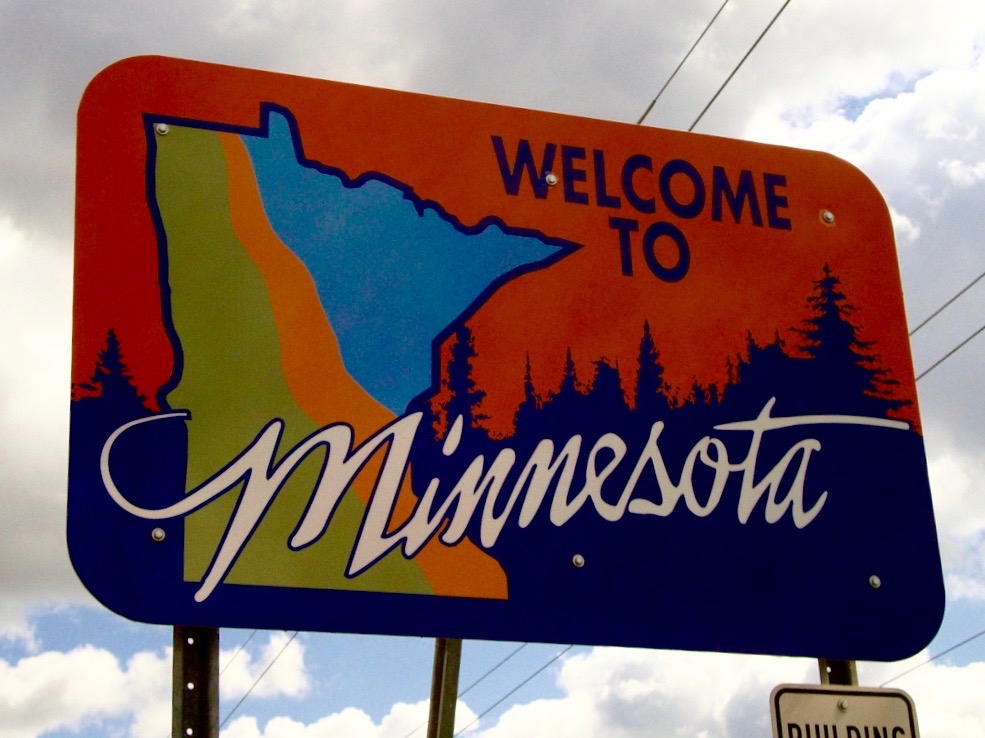
In Italian
Why discovering Oxford in Mississippi?!
And maybe put it in a road trip through this charming Southern state.
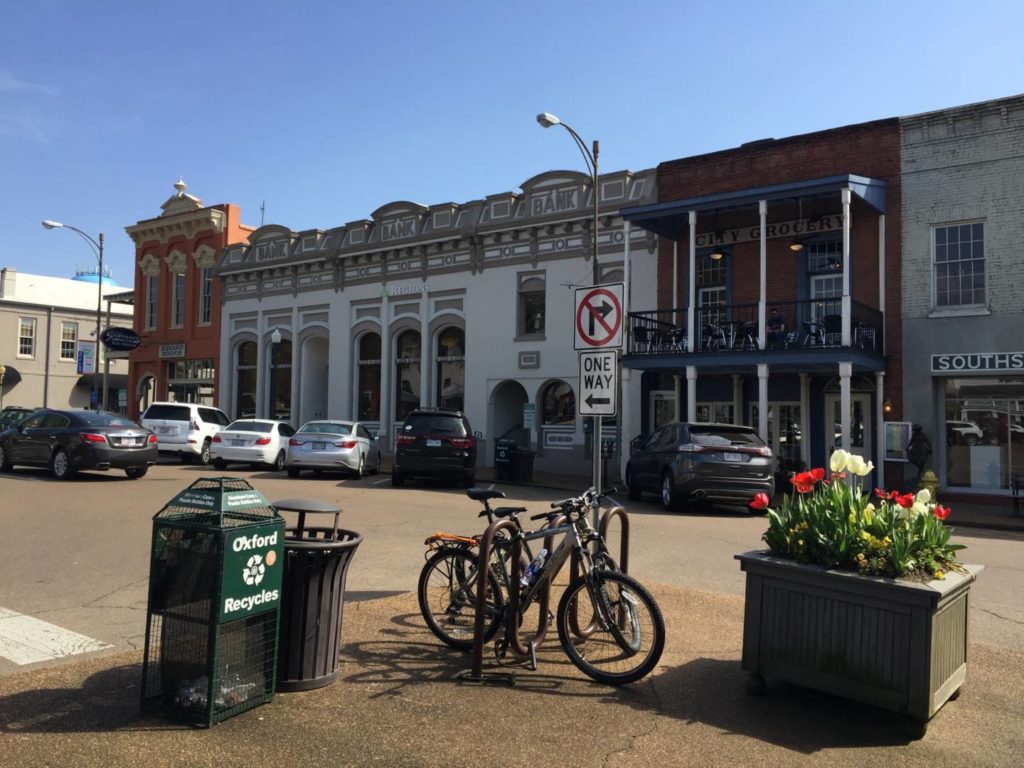
Discovering Oxford: the Courthouse Square
For its lively cultural and musical life, no doubts. Here history, blues and literature intersect without any apparent logical connection then giving life to something special and unique. It’s difficult to convey it by words, an experience that alone is worth stopping at least for a night to spend in the places of the little downtown.
For its wonderful historic dwellings – many of them date back to the antebellum period and are still inhabited by the descendents of the first colons arrived here at the beginning of the 1800s – and for the idyllic parkways, for the cobbled paving roads, the churches’ bell towers and the bookstores smelling of coffee, chocolate muffins and pages yellow with age.
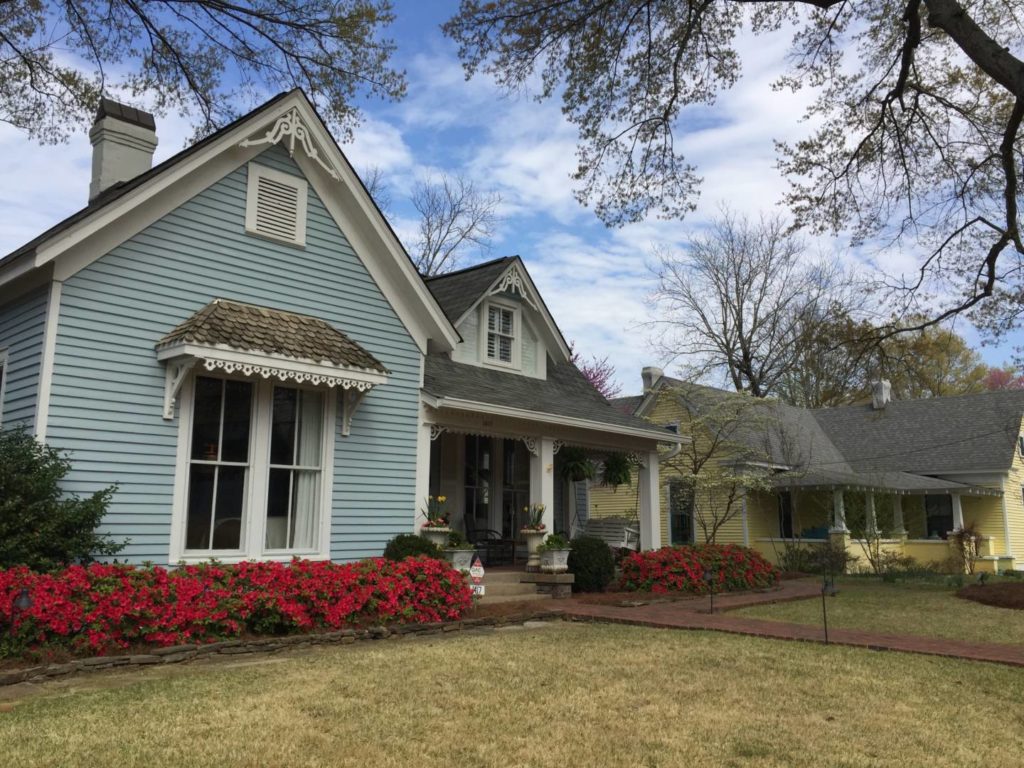
Discovering Oxford: Jackson Ave houses
For its famous University – renamed Ole Miss – created in 1848 by the Founders Fathers of the small town to make it a studies pole that compares for prestige, importance and formation with that one of the famous Oxford beyond the English Channel.
For its most famous citizen, the Nobel Prize for Literature William Faulkner: here he was living for over 30 years telling through a series of unforgettable works the life, the contrasts, the characters, the dramas and the oneness of the old South, bounded indissolubly to its traditions and its history.
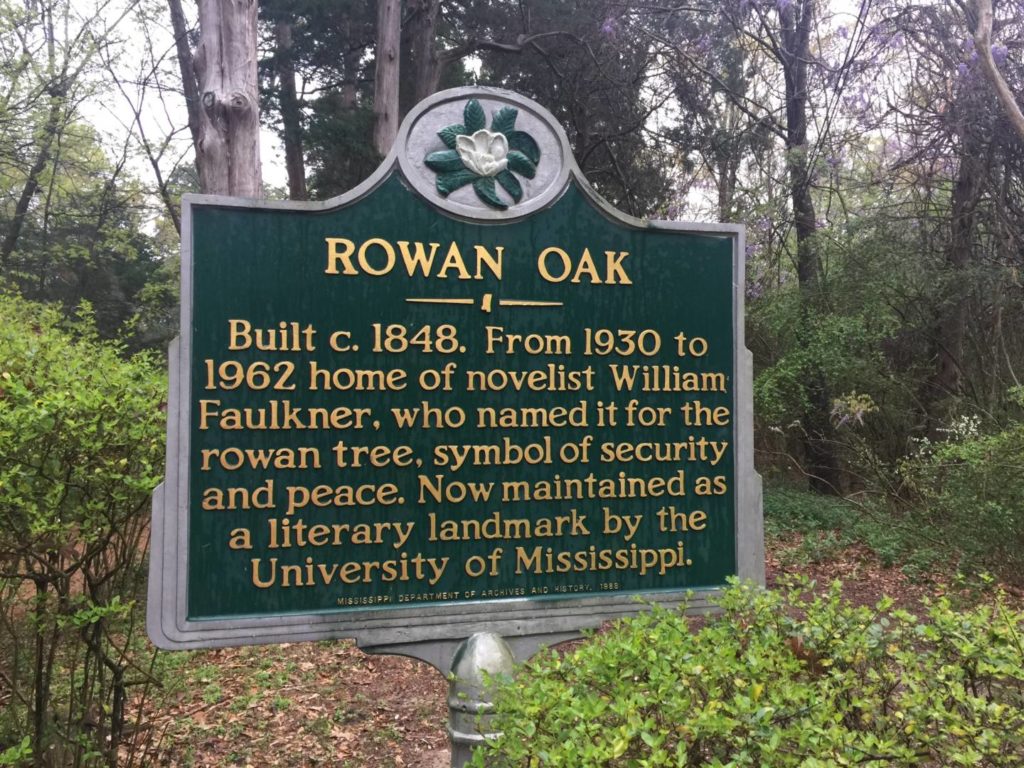
Discovering Oxford: Rowan Oak
The little downtown develops around the very central Courthouse Square, between Van Buren Ave and Jackson Ave.
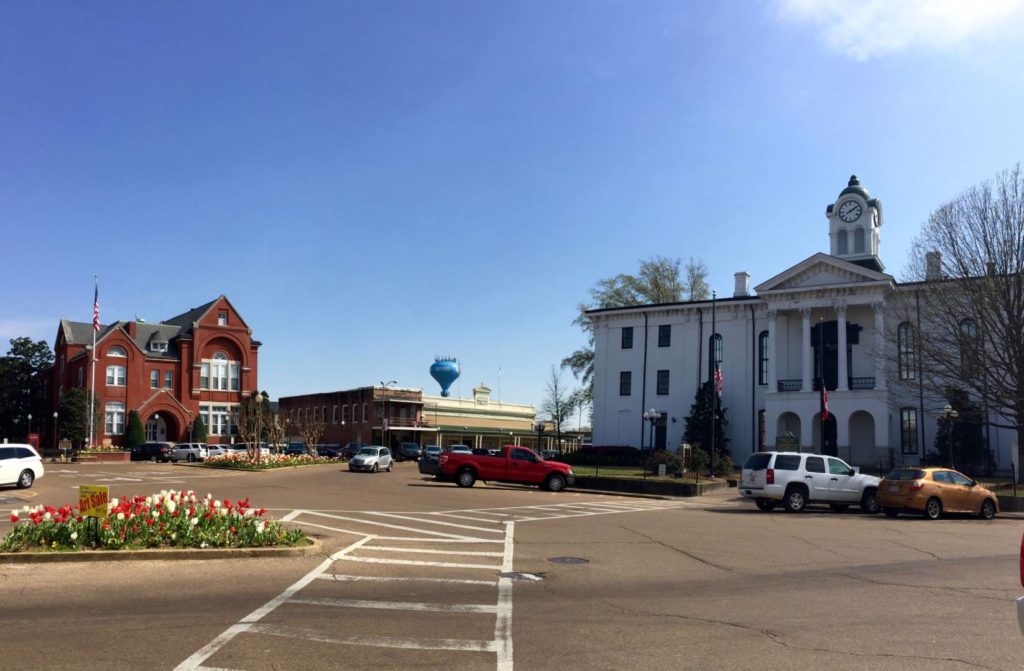
Discovering Oxford: views of Courthouse Square
Here it’s possible to enjoy the slow and nice rhythms of a typical Southern small town, going shopping to stores and bookstores, discovering the fascinating period dwellings between Jackson and Jefferson Ave and maybe decide to stay overnight in an authentic historic Inn – after got map and information in the near Visitor’s Center at 415, South Lamar Blv. And – why not? – to stop and listening to an extempore live music session in the middle of the main square.
Then it’s inevitable the stop at one of the most famous independent bookstores in the United States, the Square Books at 160, Courthouse Square. To look about the very rich section dedicated to William Faulkner and other famous Southern writers and enjoy a delicious black coffee with home-made chocolate muffin upstairs.
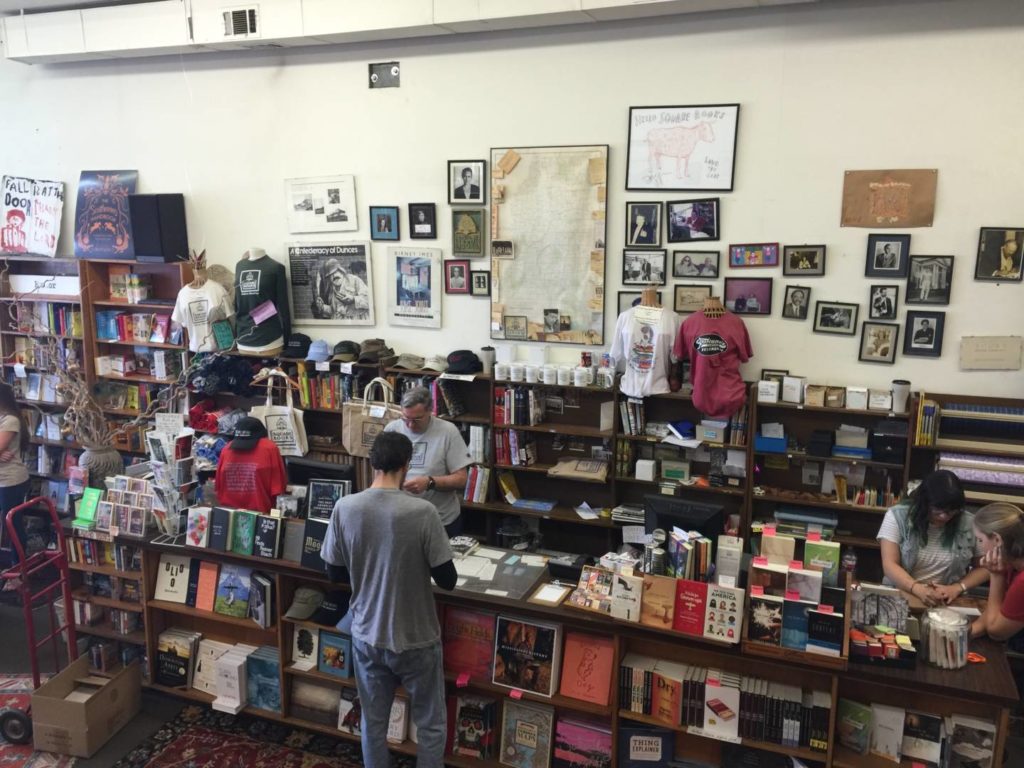
Discovering Oxford: The Square Books
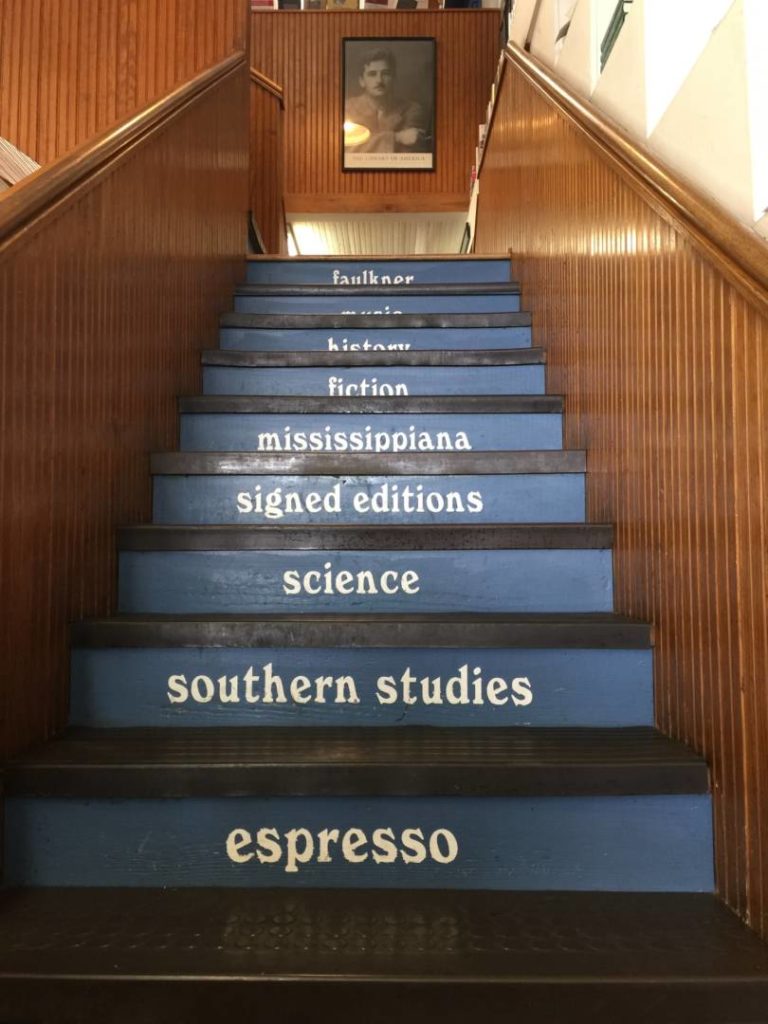
Discovering Oxford: The Square Books, details
The prestigious University of Mississippi, called Ole Miss, second in the State for largeness, (even 5 campus) and number (about 24.000 students a year).
The main campus (1km far from Oxford downtown) develops like a downright town with rules and traditions to observe strictly.
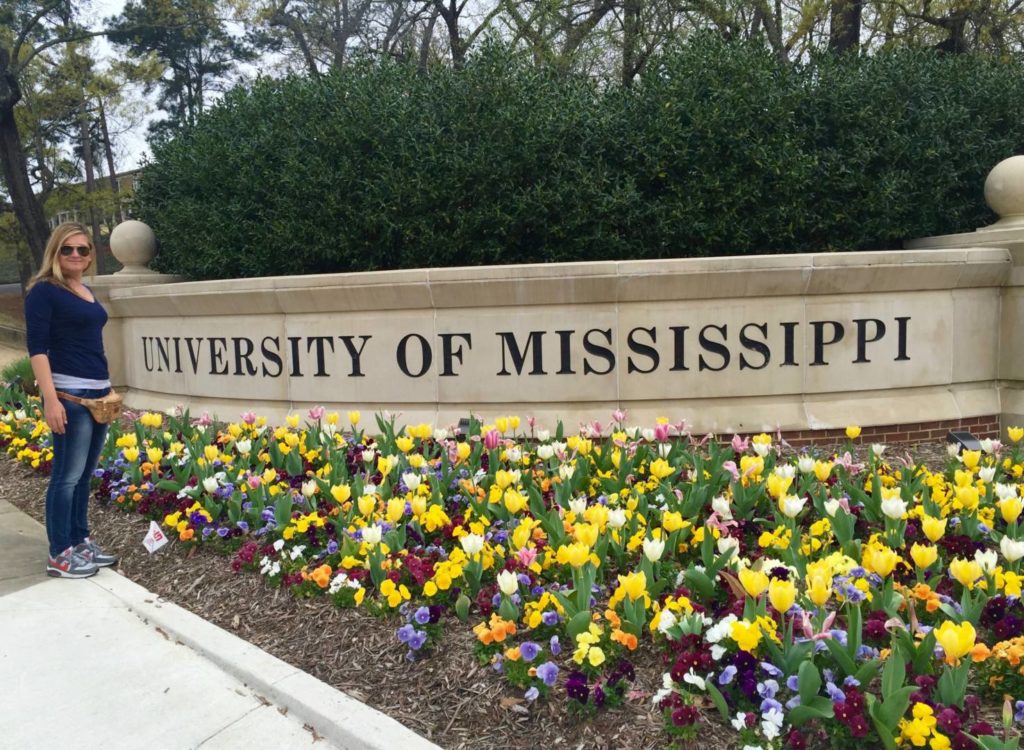
Discovering Oxford: the Ole Miss, the University of Mississippi
Like the one not to exceed the 18miles speed limit per hour inside the university to honor the jersey number of the most famous quarterback of the Ole Miss history, Archie Manning III.
Or like the one to hearing the traditional Easter Mass in the central rotunda of the campus, with plaid, food, sweets and drinks to have lunch all together.
It’s possible to go inside the university area by car and explore it alone, cross the Fraternity Row where the several university fraternities rise and visit the University of Mississippi Museum. Free admittance and the collection of the objects related to the history of the state is really surprising.
It is forbidden to exceed the 18miles speed limit per hour, in honor to the jersey number of the quarterback Archie Manning III.
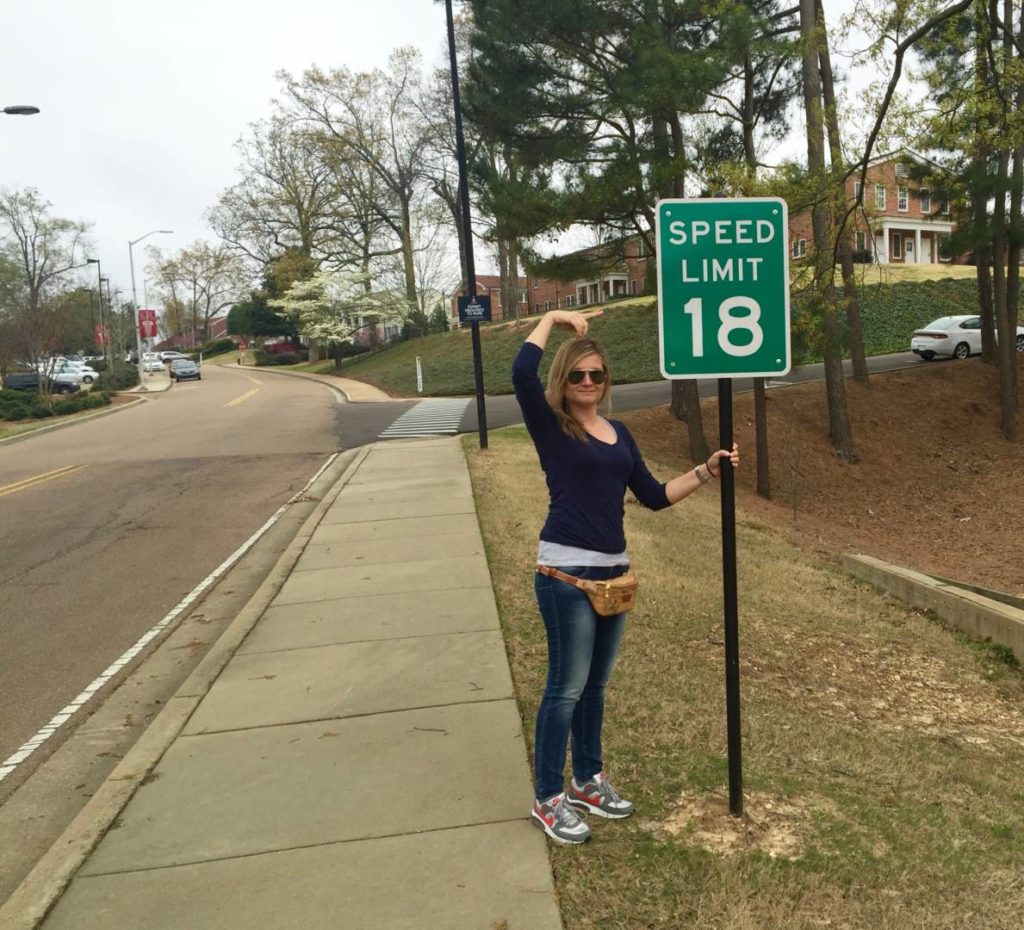
18miles speed limit in honor to the jersey number of the quarterback Archie Manning III
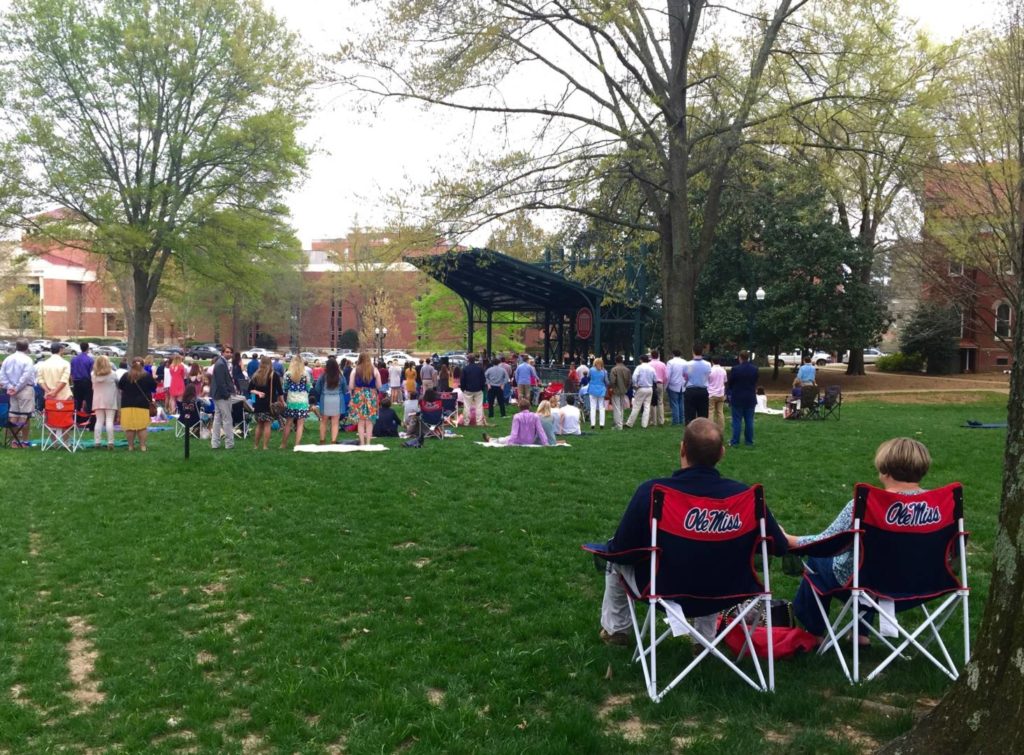
Discovering Oxford: Easter Mass at the Ole Miss
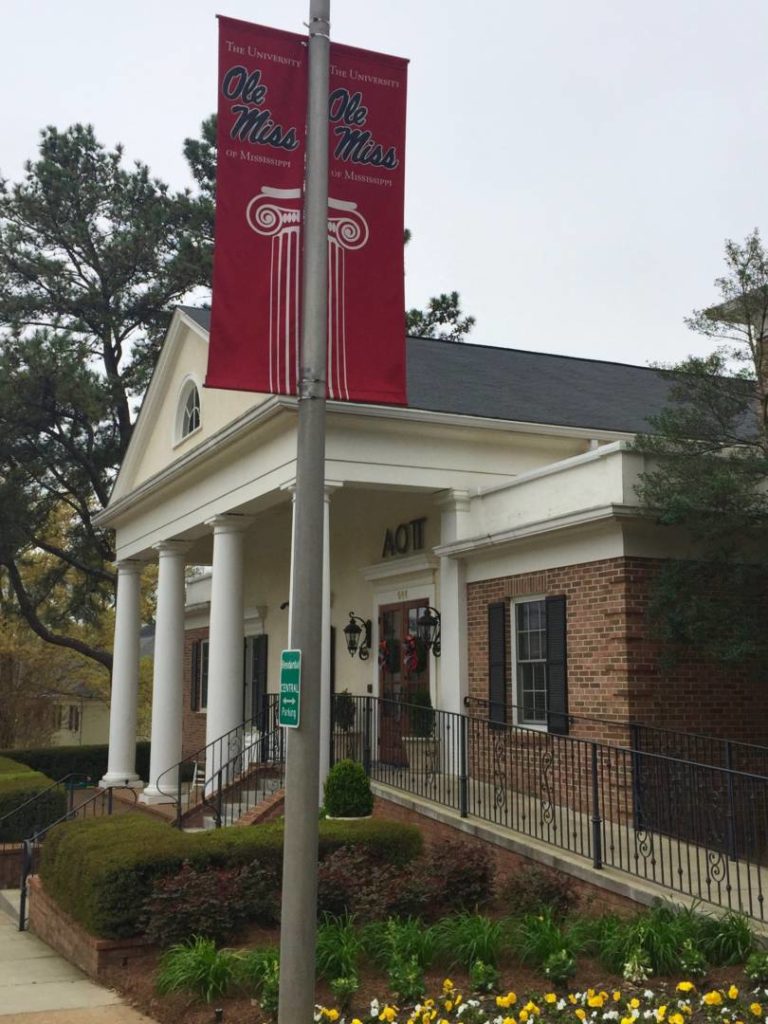
Sorority – Alpha Omricon Pi, Ole Miss
His statue is in the garden of the Oxford City Hall in Courthouse Square.
Sitting with his inseparable hat on an iron bench, William Faulkner seems to observe pleased the life that, unchanged and imperturbable, rolls by slow and rhythmic among the streets of his small town, the same “life” that has inspired his most famous stories, those ones of the so-called Province of Yoknapatawpha.
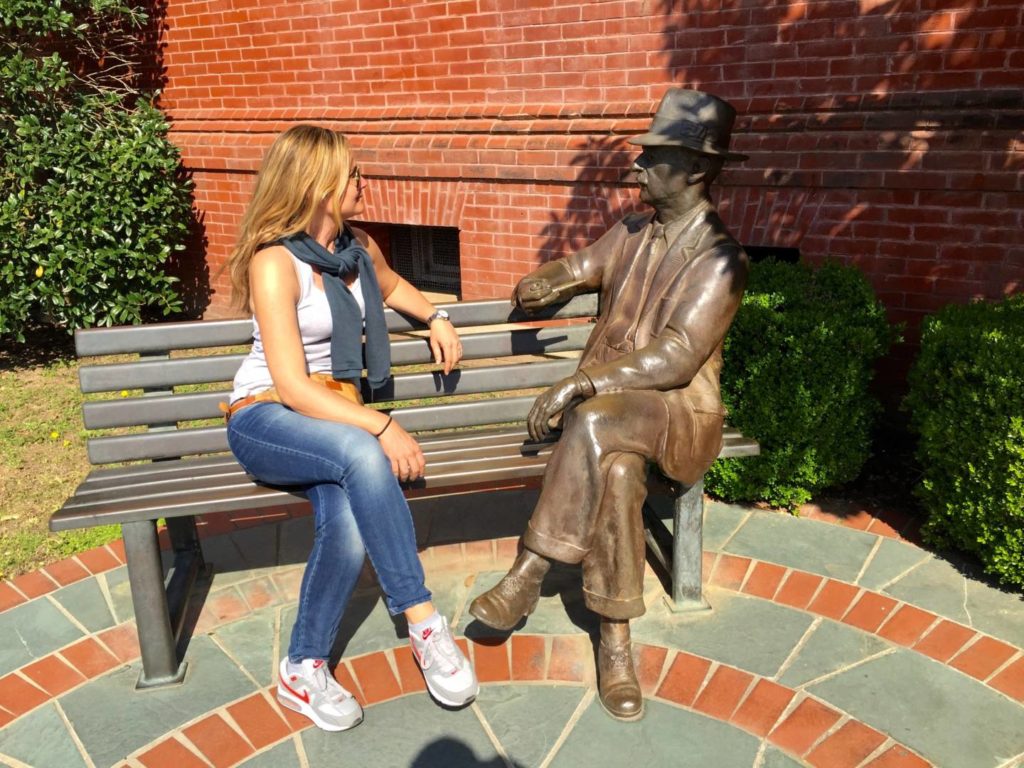
Discovering Oxford together with William Faulkner
An imaginary community result of Faulkner’s memories and experiences: experiences lived in a Mississippi still bounded to the memories and traditions of the old confederate South, consequences of the Civil War and the slavery abolition included.
William Faulkner – writer, poet, scriptwriter (he supervised many hollywoodian productions), playwright – today is considered one of the most important artists of the American literature of the 1900s, like Ernest Hemingway, Francis Scott Fitzgerald and Eudora Welty.
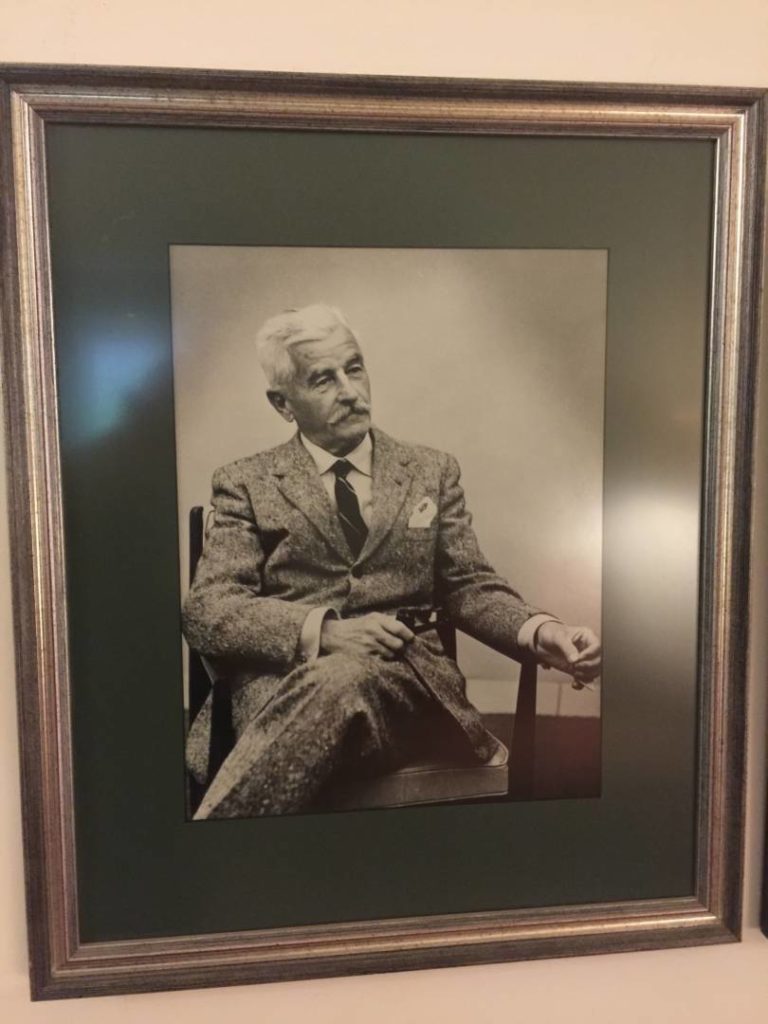
Discovering Oxford: William Faulkner
Rowan Oak, the house where he had been living with his wife Estelle for 30 years, is little far from the downtown at 916, Old Taylor Road. It’s an ancient dwelling built in 1844, then bought by Faulkner in 1930 and successively restored.
Rowan Oak tells – not without some emotion – William Faulkner’s world.
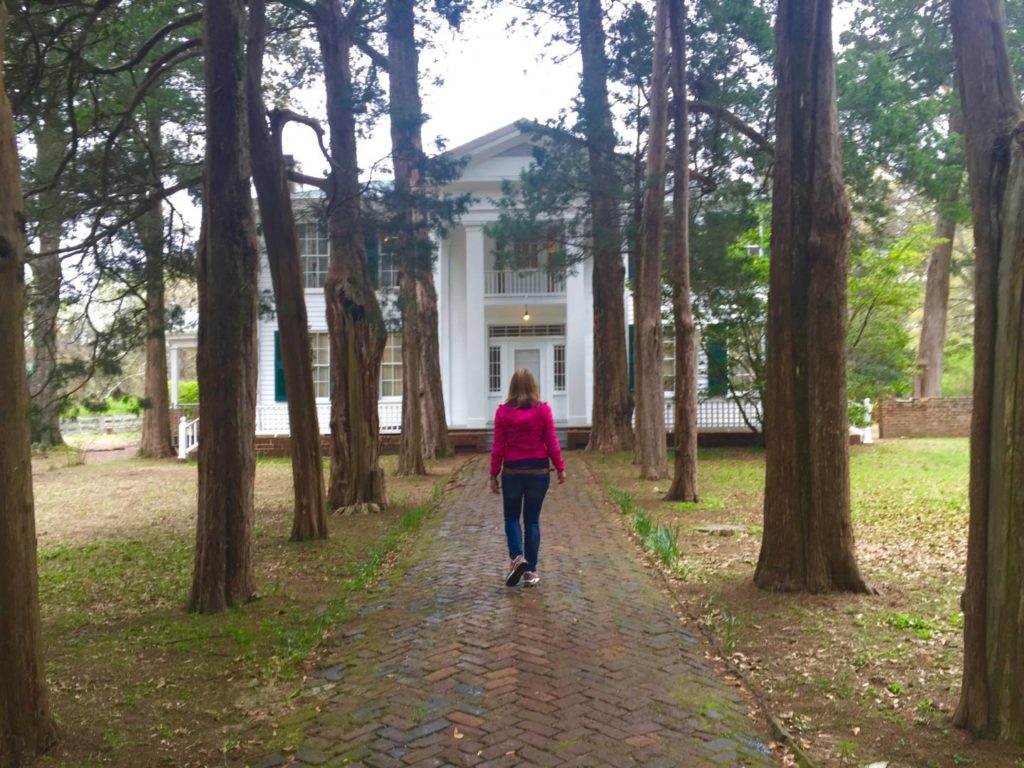
Discovering Oxford: Rowan Oak, the outside
The place where reality and imagination, fragments of private life, family stories and public life had intertwined for years then turned into words, expressions and tales of his most famous works over time.
The Sanctuary, Light in August, The Hamlet, The Town, The Mansion, A Fable, of which still today it’s possible to read autograph passages on the walls of his studio on the second floor.
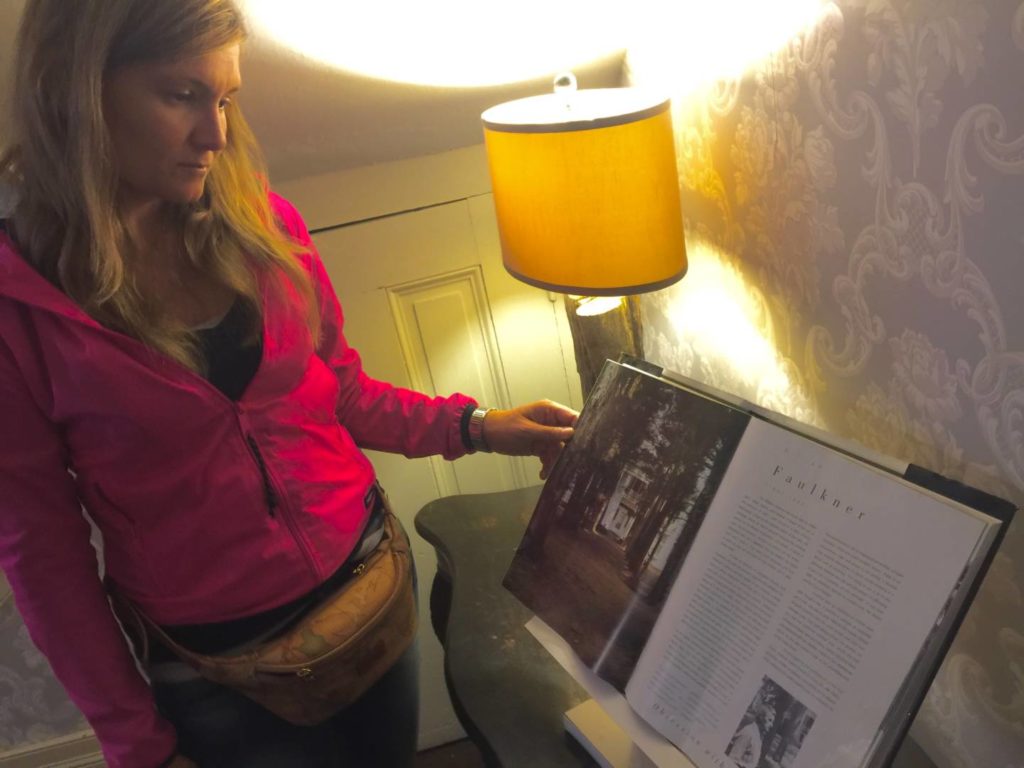
Discovering Oxford: Rowan Oak, the inside
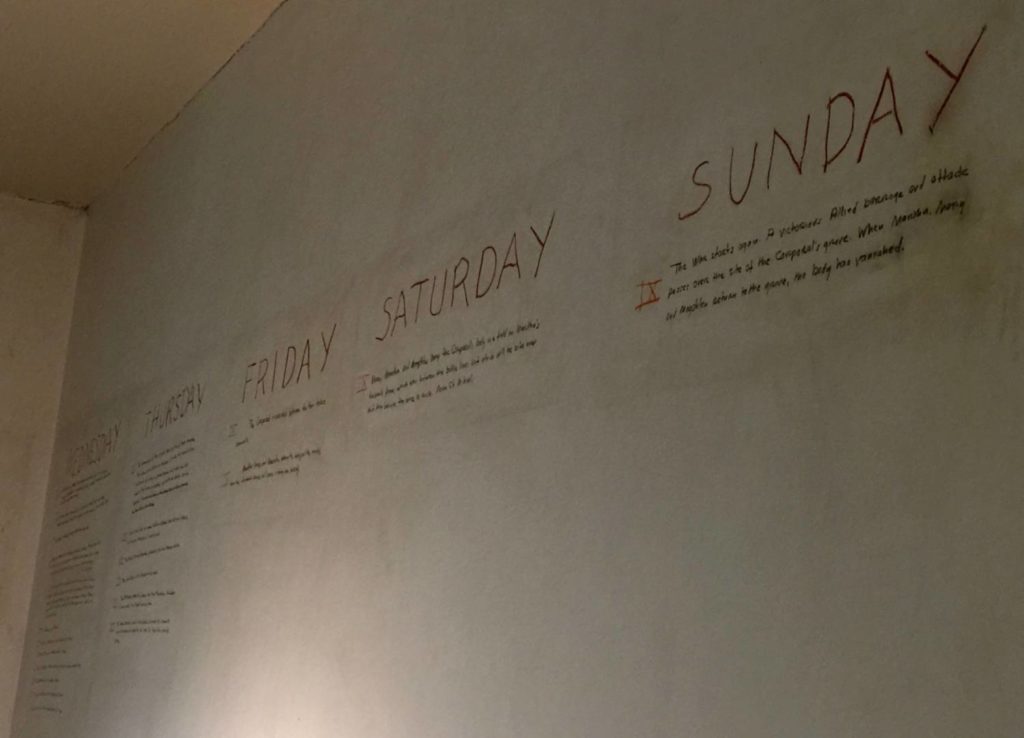
Discovering Oxford: Rowan Oak, autograph passages of “A Fable” on the wall of the studio
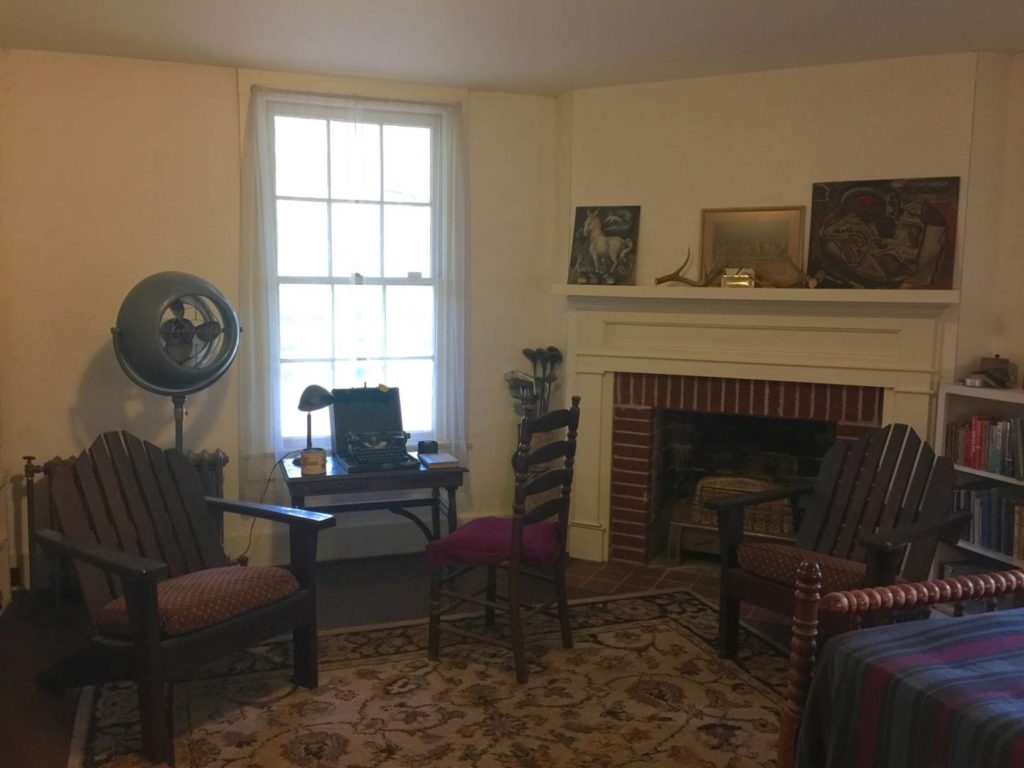
Discovering Oxford: Rowan Oak, Faulkner’s studio
Here Faulkner received the news of the Nobel Prize for Literature in 1949 and of the Pulitzer Prize in 1954. And here, in a deep status of depression, by now alcohol and medicines addicted, he suffered the heart attack that caused the admission to the Byhalia sanatorium and the following death on July 6th 1962.
His grave is in the near St. Peter’s Cemetery, like the notice indicating the tomb says…twenty steps east of this marker.
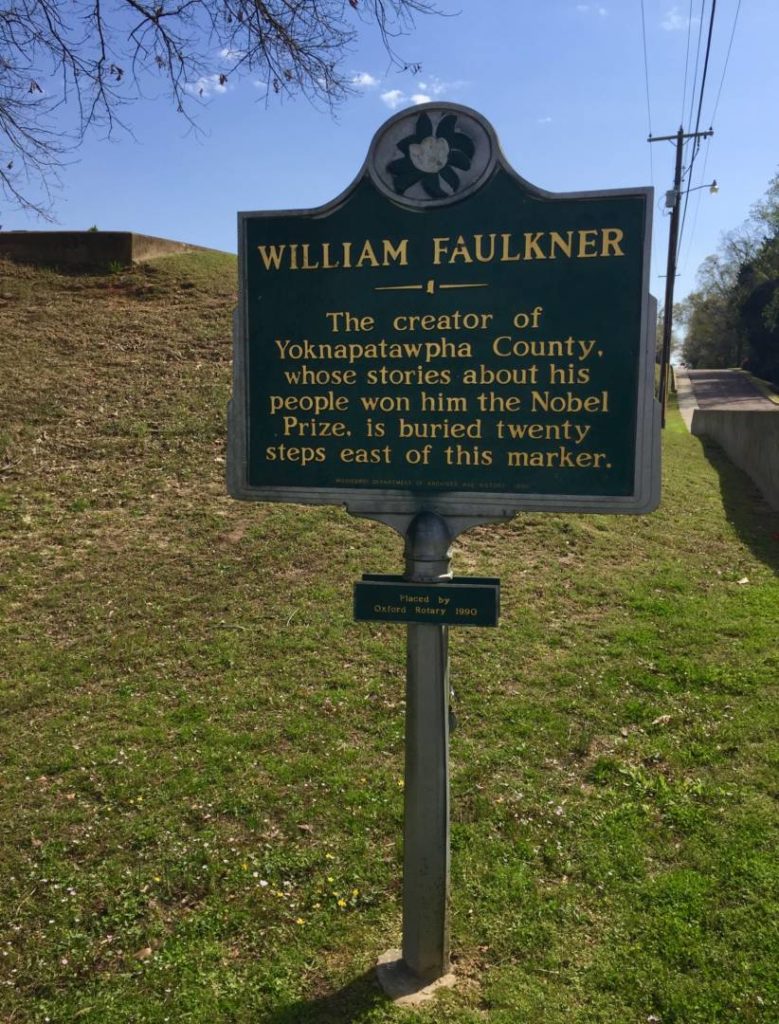
The notice indicating Faulkner’s grave
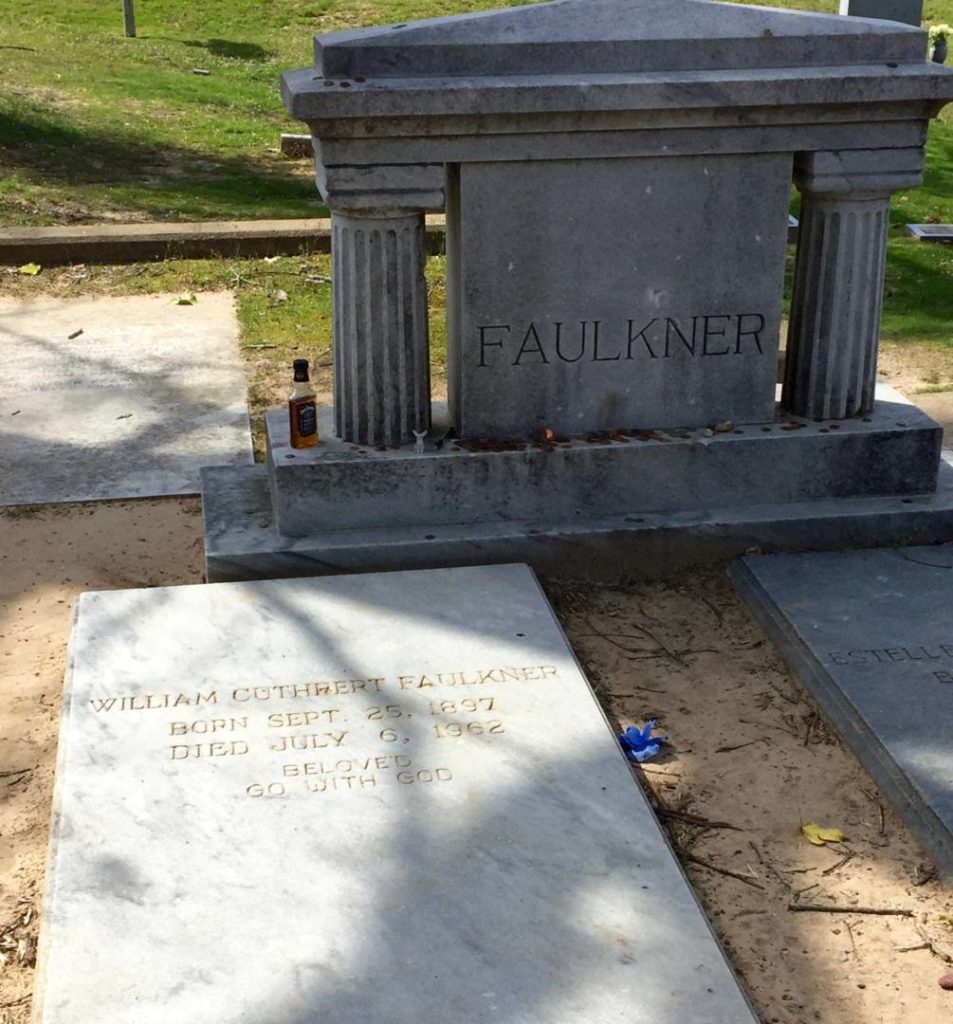
Discovering Oxford: William Faulkner’s grave
On his tomb pens, pencils, cards of budding writers and fans from all over the world.
And the inevitable “companion” of life and work, his Jack Daniel’s whiskey bottle.
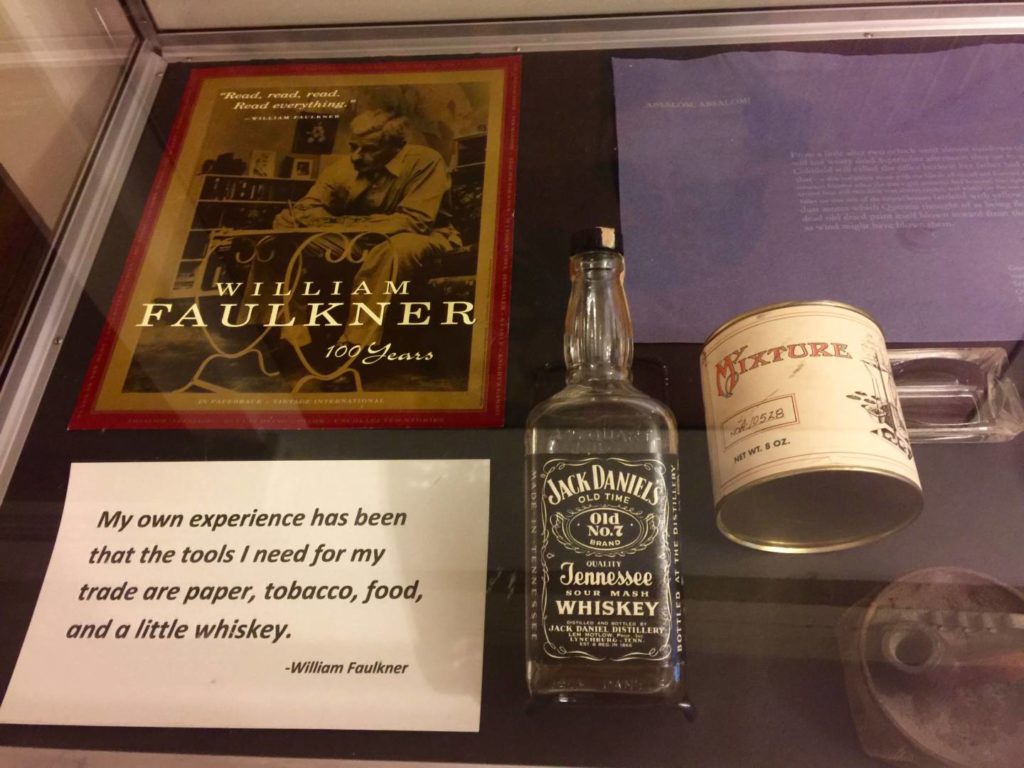
Discovering Oxford: Rowan Oak, William Faulkner fragments of life
My own experience has been that the main tools I need for my trade are paper,
tobacco, food and a little whiskey.
(William Faulkner)